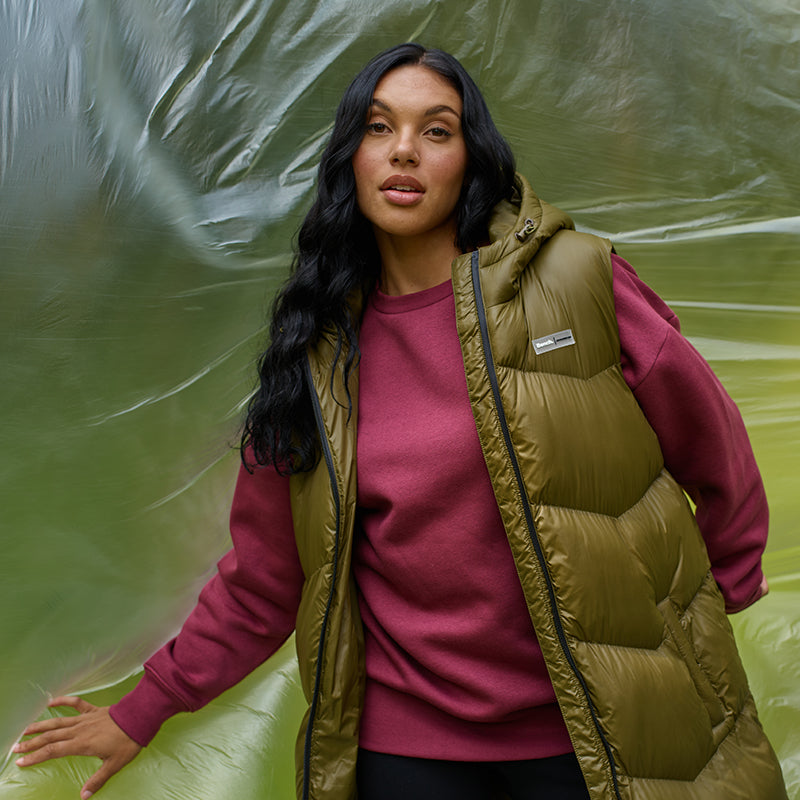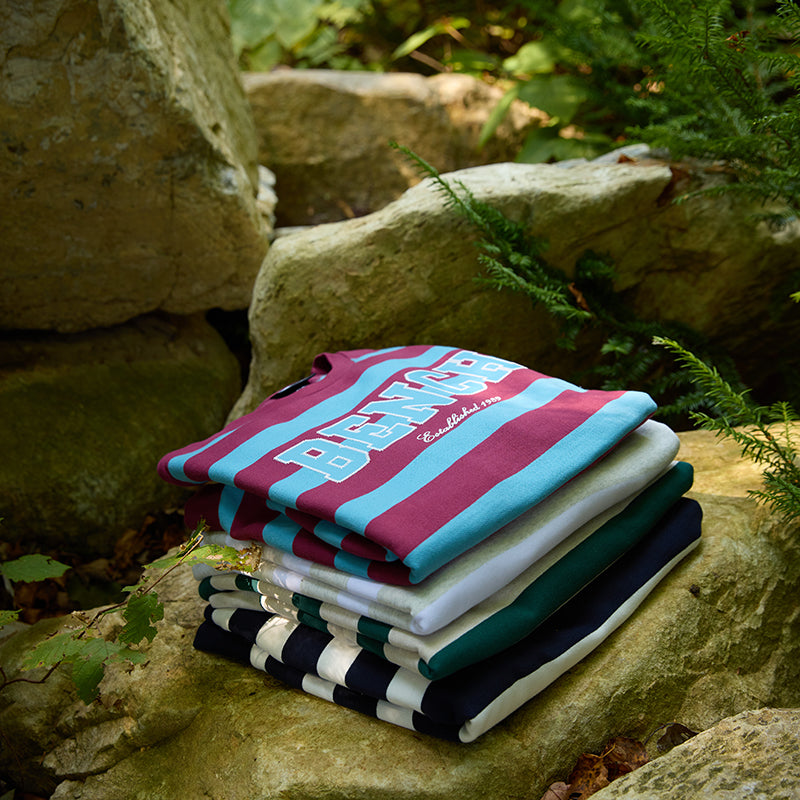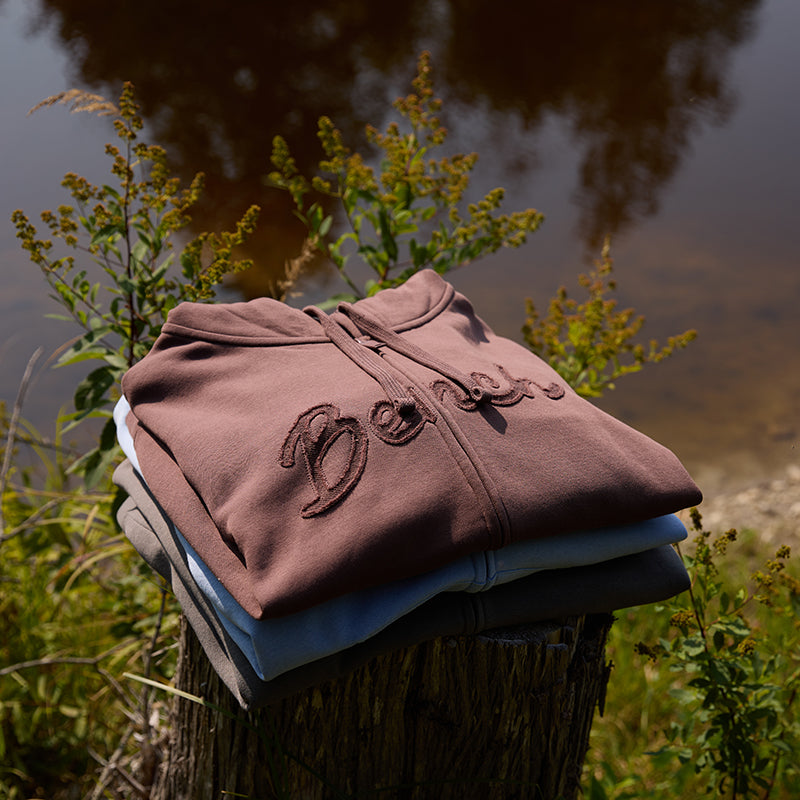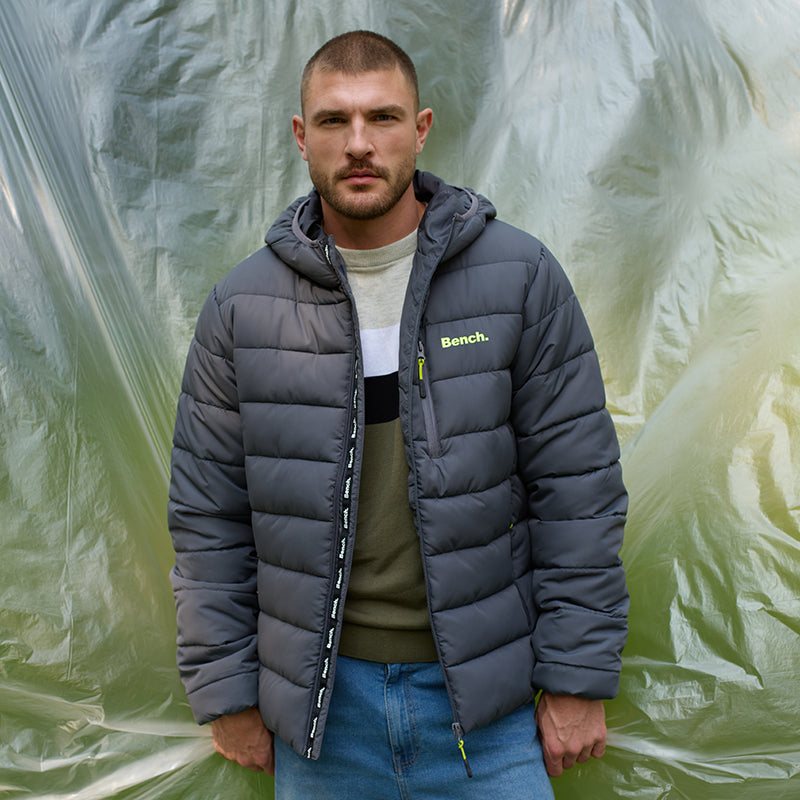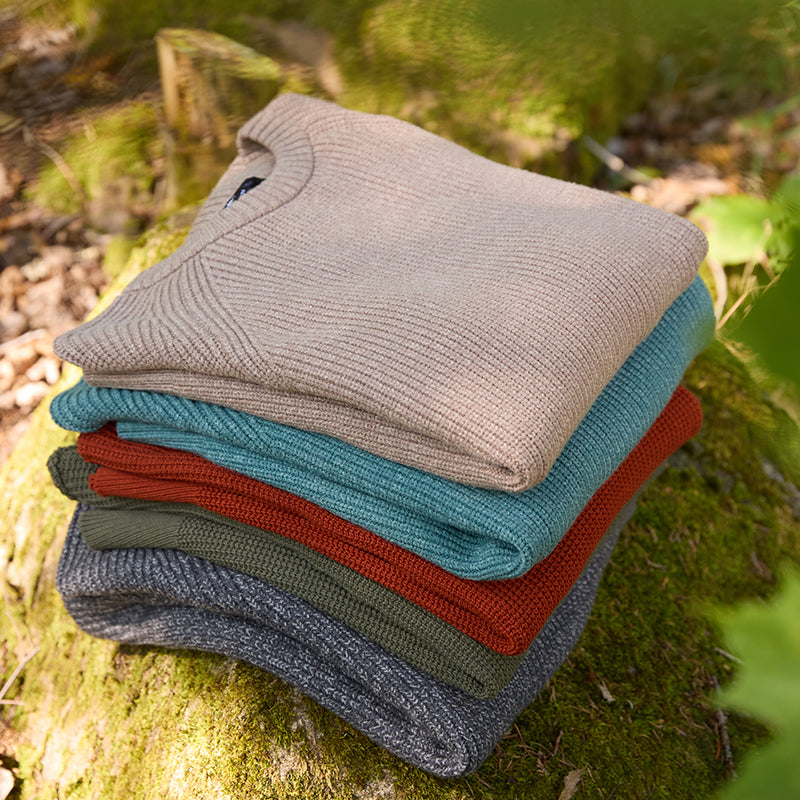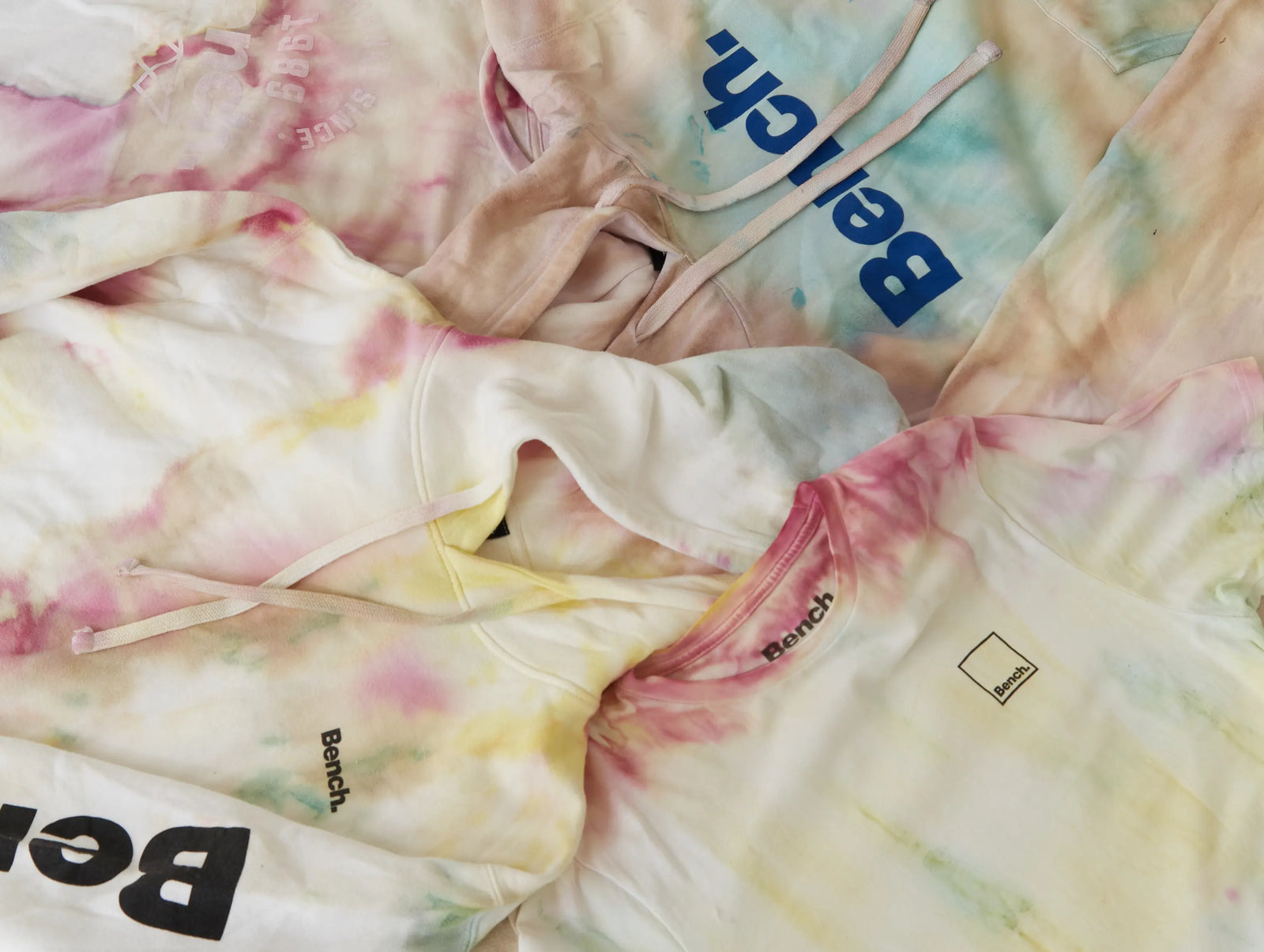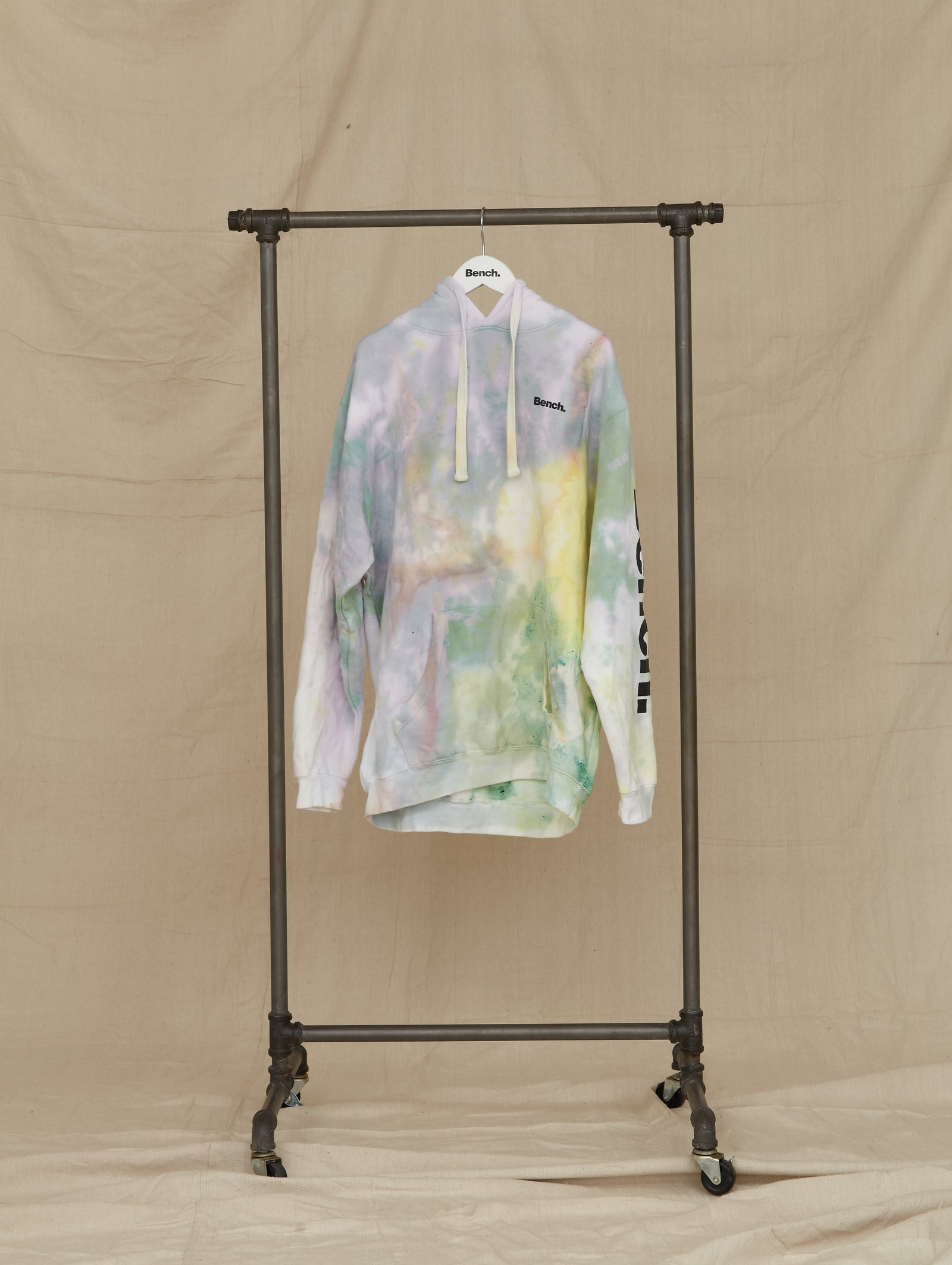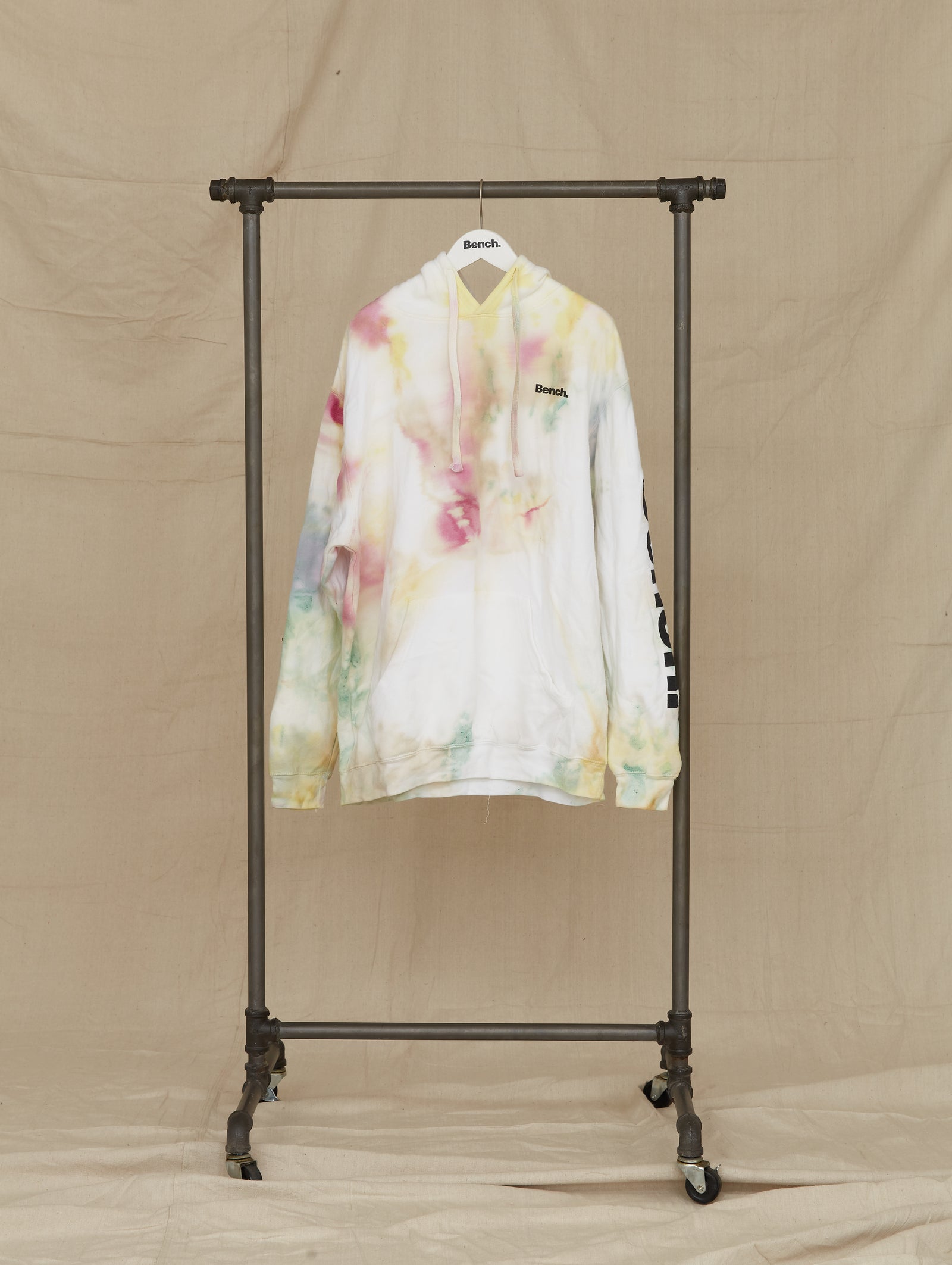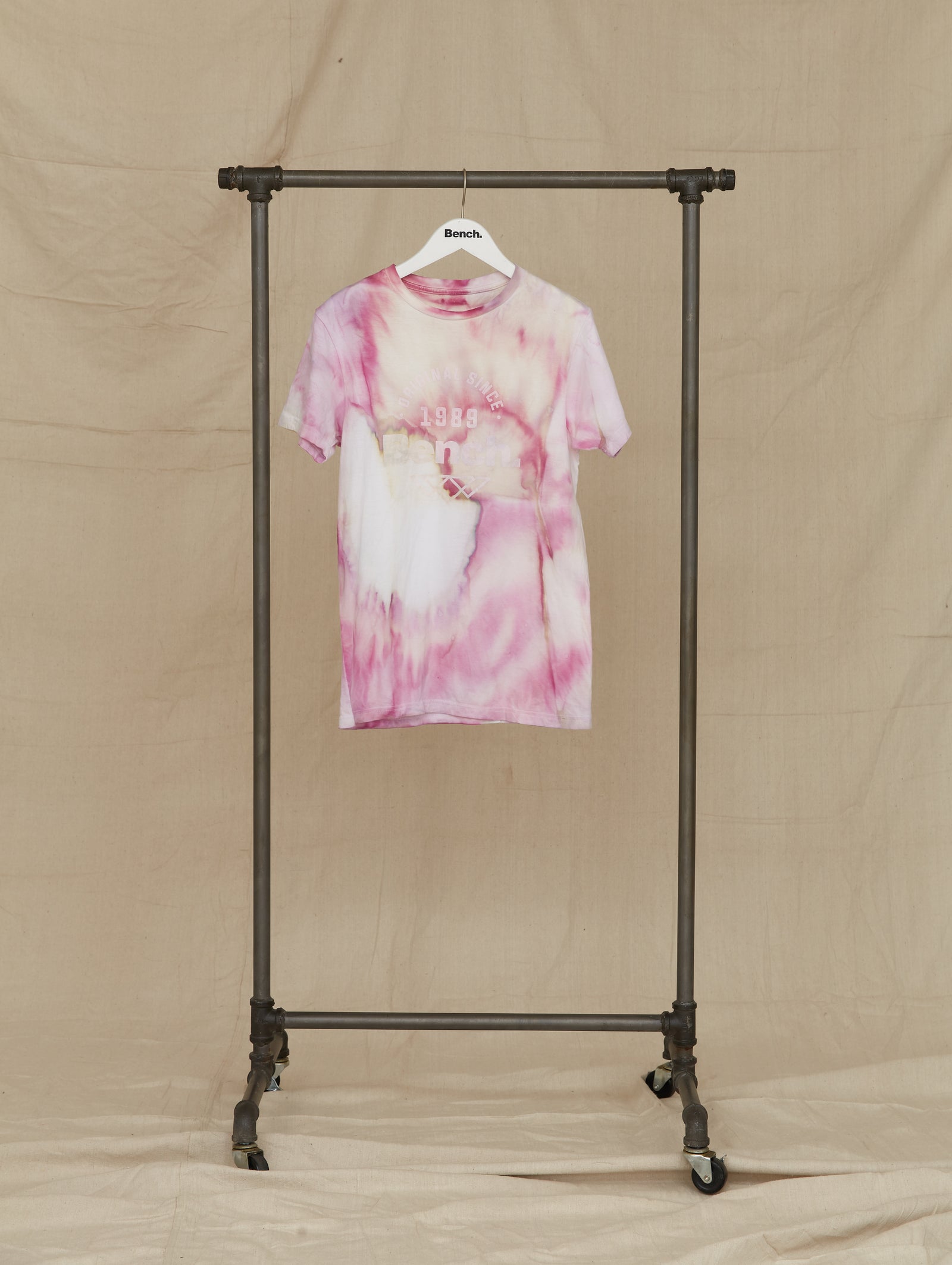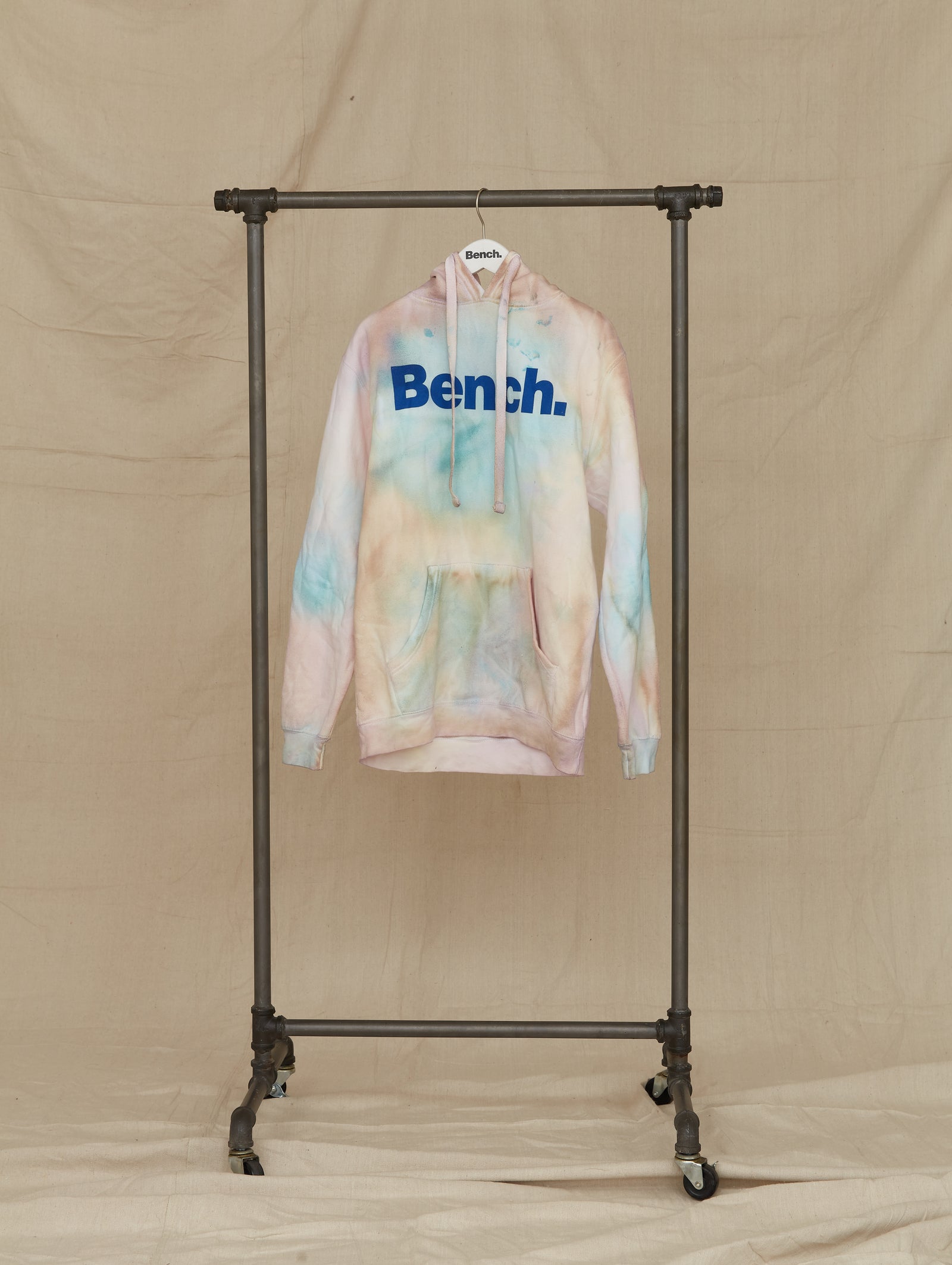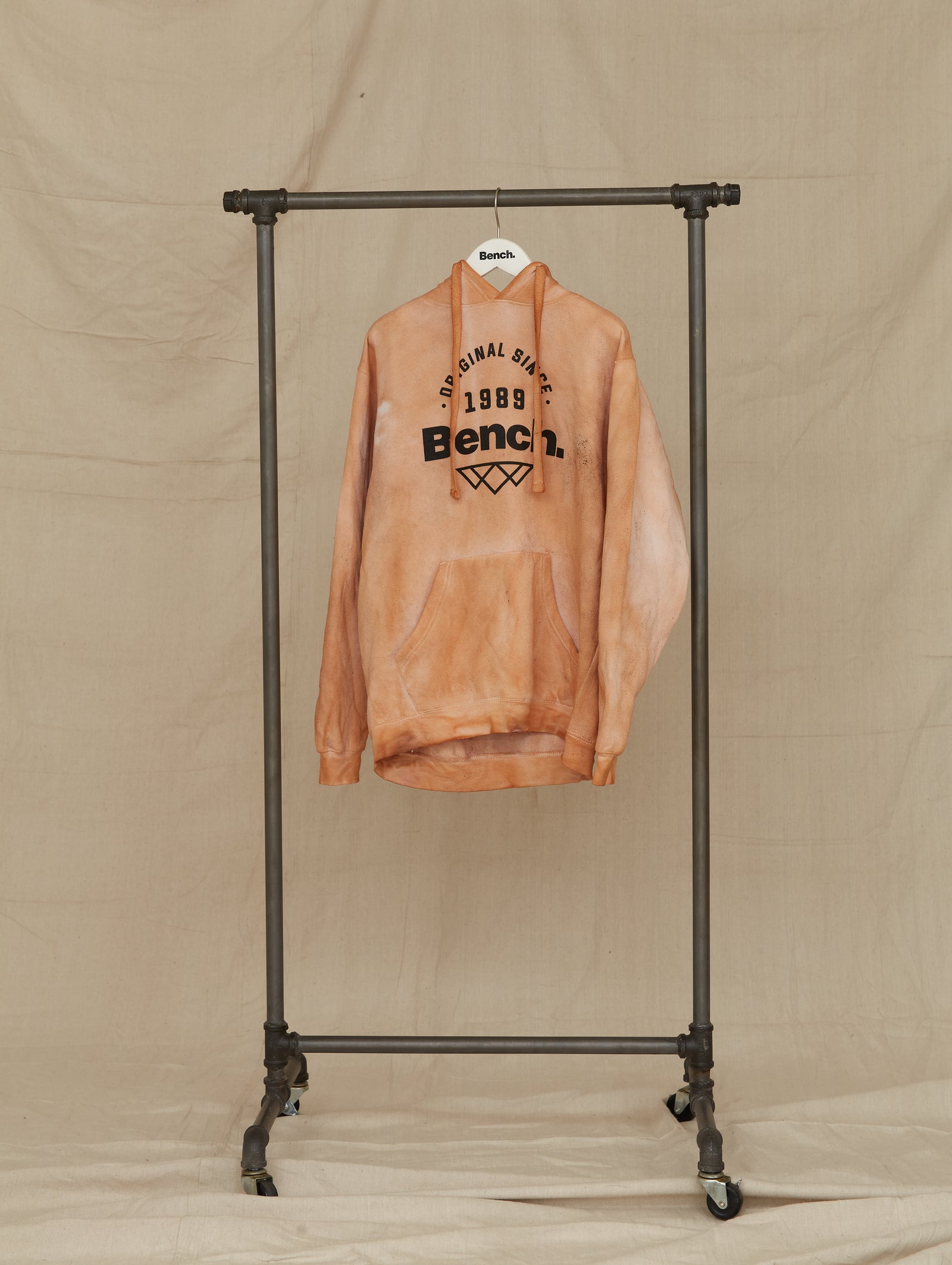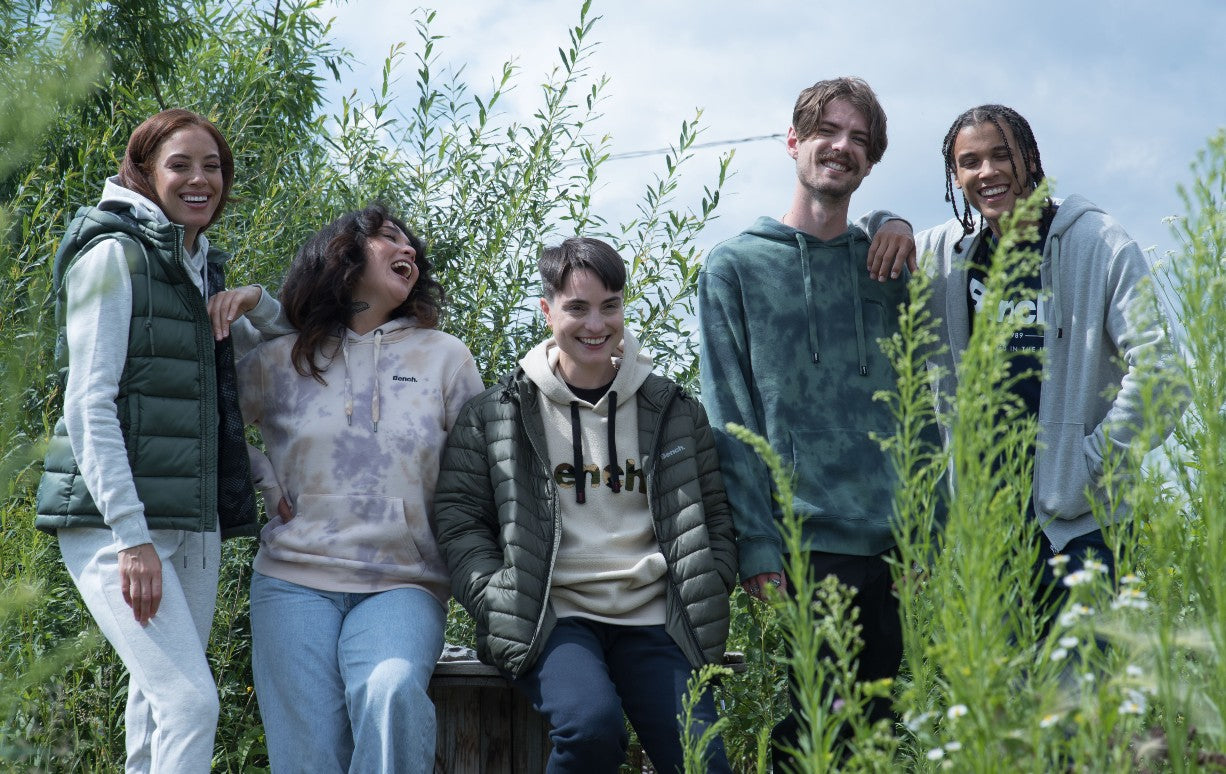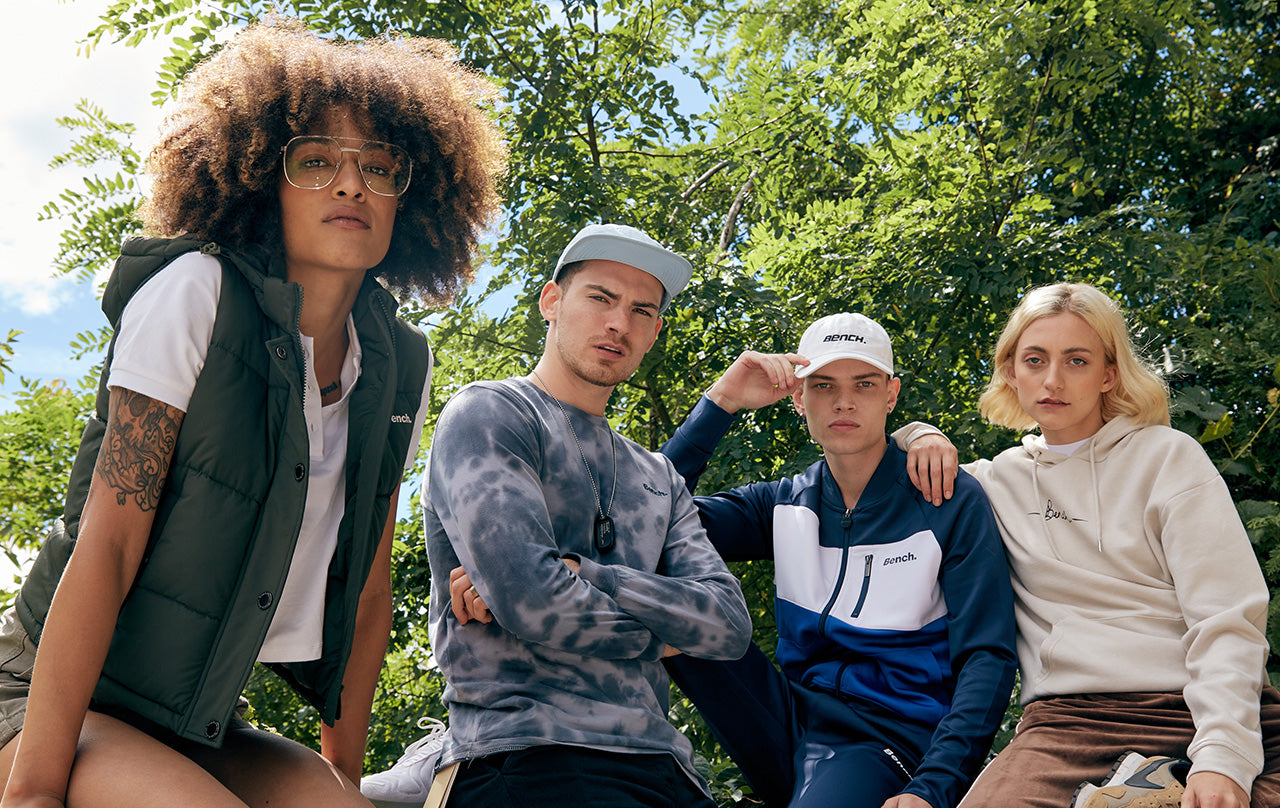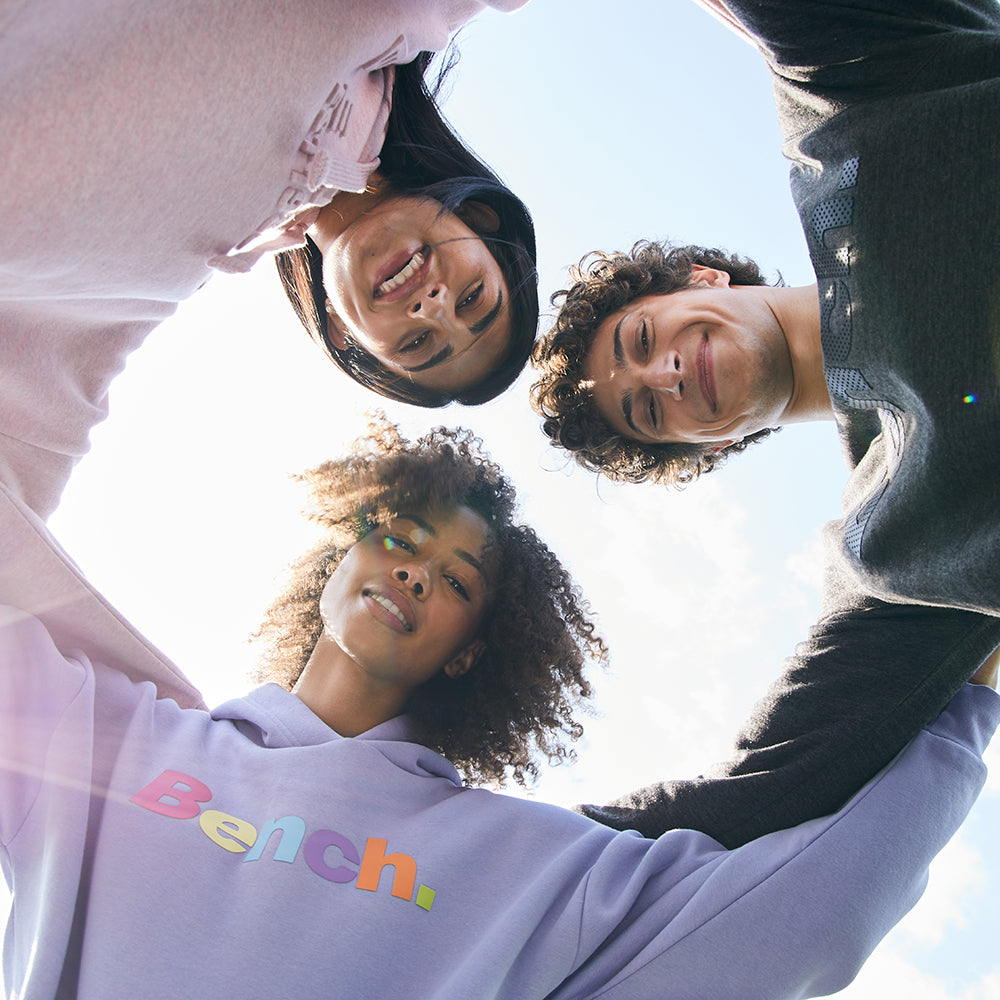How to: Naturally Tie Dye Your Garments
Sustainable, Easy and Economical: DIY Natural Tie Dye
Sustainable, Easy and Economical: DIY Natural Tie Dye
When most people think of tie-dye, what comes to mind is the image of vibrant colors clashing together in a psychedelic pattern. Though it’s a timeless look, a more muted version of the DIY classic is making a big comeback. We’ve decided to test out one of the best ways to get this style of tie-dye at home with :natural dyes.
Synthetic dyes, most of them made with harsh chemicals, can be harmful to both the environment and the person using them. If you’ve ever dyed clothes or hair at home you know how irritating these products can be to your skin so you can imagine what they do to surrounding water sources and soil when manufactured in large quantities.
You won’t have to worry about that if you follow our guide which uses 100% compostable products like orange peels, beets, and red cabbage. These densely pigmented fruits and vegetables are the perfect way to get that fresh, new toned-down tie-dye look.
When most people think of tie-dye, what comes to mind is the image of vibrant colors clashing together in a psychedelic pattern. Though it’s a timeless look, a more muted version of the DIY classic is making a big comeback. We’ve decided to test out one of the best ways to get this style of tie-dye at home with :natural dyes.
Synthetic dyes, most of them made with harsh chemicals, can be harmful to both the environment and the person using them. If you’ve ever dyed clothes or hair at home you know how irritating these products can be to your skin so you can imagine what they do to surrounding water sources and soil when manufactured in large quantities.
You won’t have to worry about that if you follow our guide which uses 100% compostable products like orange peels, beets, and red cabbage. These densely pigmented fruits and vegetables are the perfect way to get that fresh, new toned-down tie-dye look.
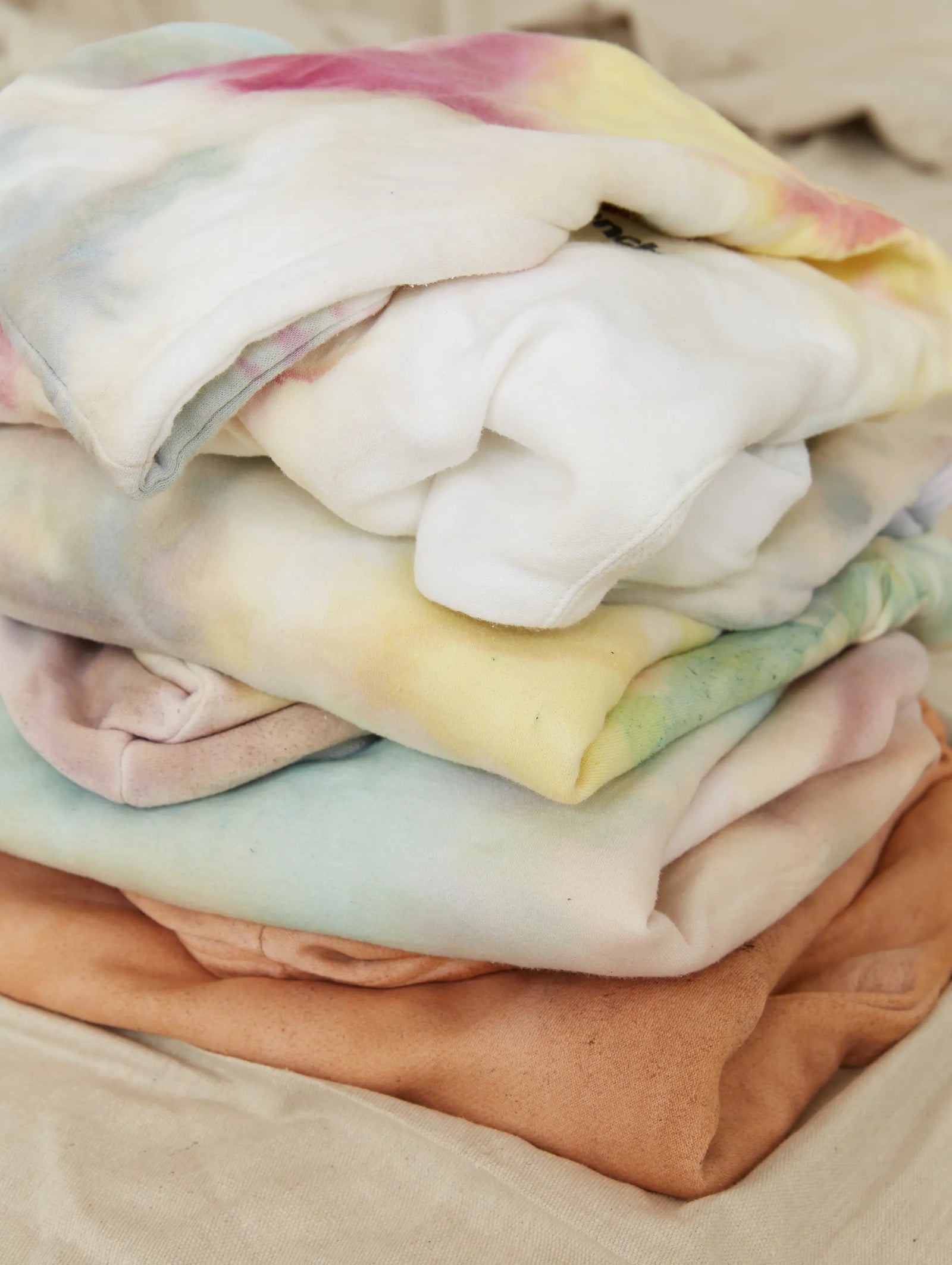
Choose your Colours
Choose your Colours
One of the best parts about creating your own dyes is how many colours you can create using items you can find at the grocery store. Here’s our selection to get you started:
- Spinach for green
- Orange peels for yellow
- Beets for red and fuschia
- Red cabbage for purple and blue
- Avocado peels and pits for peach-orange
One of the best parts about creating your own dyes is how many colours you can create using items you can find at the grocery store. Here’s our selection to get you started:
- Spinach for green
- Orange peels for yellow
- Beets for red and fuschia
- Red cabbage for purple and blue
- Avocado peels and pits for peach-orange
What You Need
What You Need
So here it is, our step by step guide on how to naturally dye your clothes. We want to see who has the funkiest, naturally dyed, Bench clothing to show off! Send us some pictures of your results along with the products you used for your natural dyes and Bench will send out a free pair of sweats to our favorite entry. Send your photos to info@bench.ca to enter.
What you'll need:
- Produce for your chosen dyes
- Light coloured clothing that
- you want to dye
- A large pot
- A strainer
- A measuring cup
- Kitchen knife and cutting board
- Rubber bands
- Squeeze bottles
- White vinegar
- Salt
So here it is, our step by step guide on how to naturally dye your clothes. We want to see who has the funkiest, naturally dyed, Bench clothing to show off! Send us some pictures of your results along with the products you used for your natural dyes and Bench will send out a free pair of sweats to our favorite entry. Send your photos to info@bench.ca to enter.
What you'll need:
- Produce for your chosen dyes
- Light coloured clothing that
- you want to dye
- A large pot
- A strainer
- A measuring cup
- Kitchen knife and cutting board
- Rubber bands
- Squeeze bottles
- White vinegar
- Salt
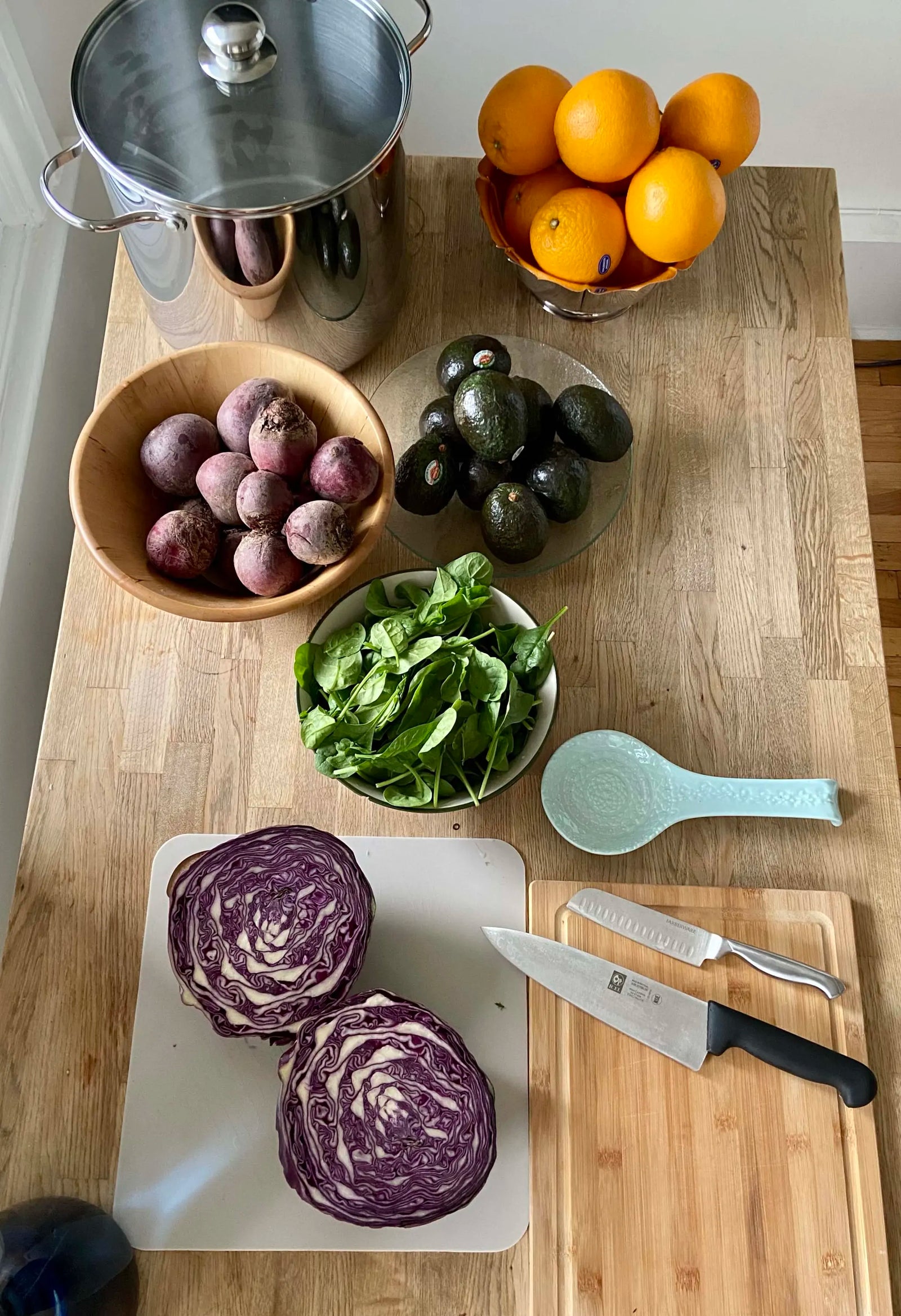
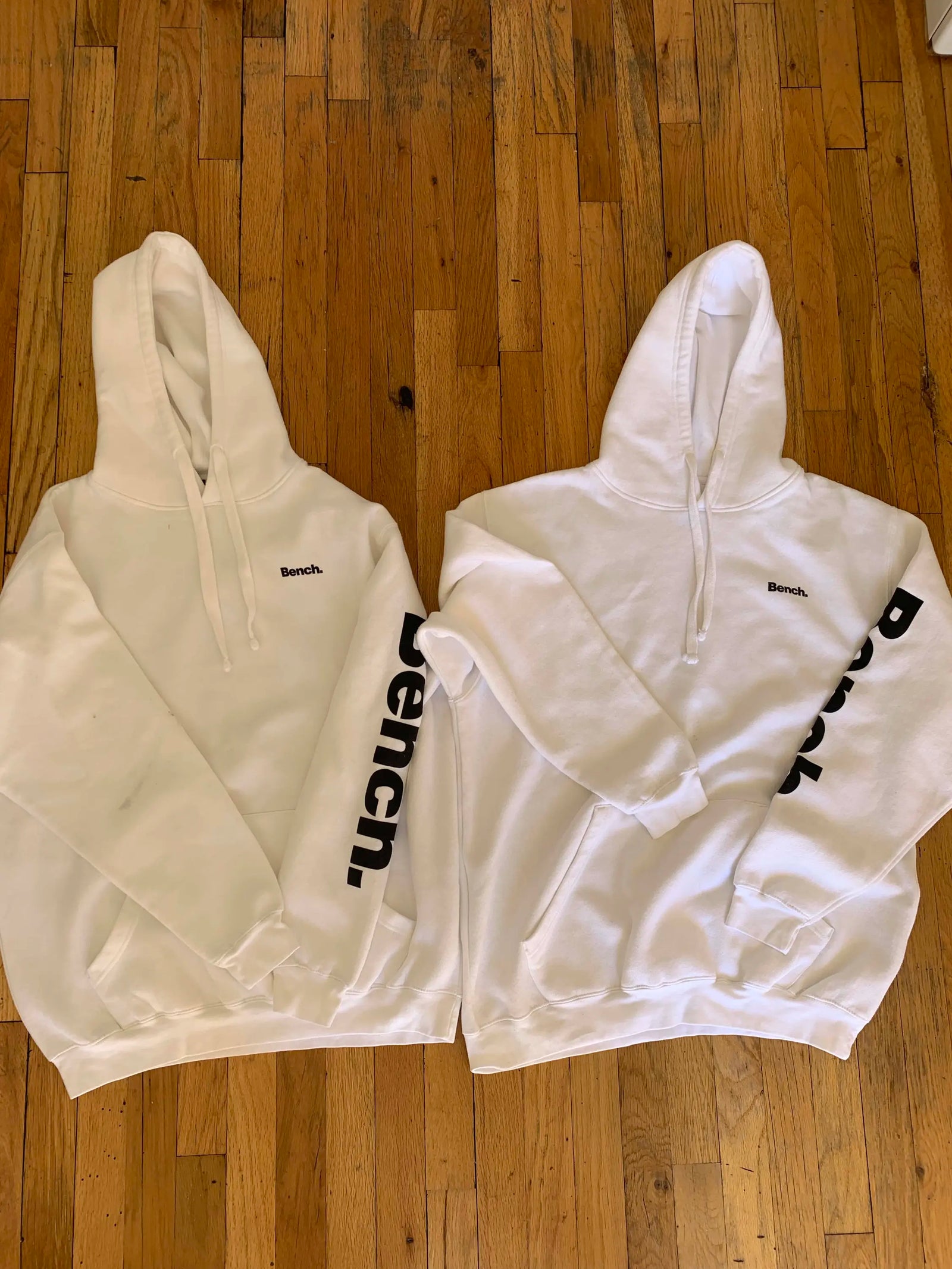
1. Choose Your Canvas
1. Choose Your Canvas
The first step in any tie-dye process is picking which clothes you want to personalize.
For natural dyeing, we recommend you use fabric with mainly natural fibres like cotton or wool. The hoodies and shirts we dyed were made of 100% cotton and 60%/40% cotton-polyester blends. After you’ve found the right piece to dye, it’s important to cold-wash the clothing with some detergent and it to dry.
The first step in any tie-dye process is picking which clothes you want to personalize.
For natural dyeing, we recommend you use fabric with mainly natural fibres like cotton or wool. The hoodies and shirts we dyed were made of 100% cotton and 60%/40% cotton-polyester blends. After you’ve found the right piece to dye, it’s important to cold-wash the clothing with some detergent and it to dry.
2. Make Your Dyes
2. Make Your Dyes
Whether you’re using spinach for a deep green, beets for red, orange peels for yellow, red cabbage for purple, or avocado peels and pits for peach-orange, the process is generally the same.
- Chop up your produce.
- Bring a pot of water to a boil and add your produce. Simmer for 1 hour. Let cool to room temperature.
- Strain and discard any solids. Keep the liquid, that’s your dye!
- Pour the dye into a squeeze bottle and repeat for any additional colours. Make sure to wash your tools to avoid color contamination.
Whether you’re using spinach for a deep green, beets for red, orange peels for yellow, red cabbage for purple, or avocado peels and pits for peach-orange, the process is generally the same.
- Chop up your produce.
- Bring a pot of water to a boil and add your produce. Simmer for 1 hour. Let cool to room temperature.
- Strain and discard any solids. Keep the liquid, that’s your dye!
- Pour the dye into a squeeze bottle and repeat for any additional colours. Make sure to wash your tools to avoid color contamination.
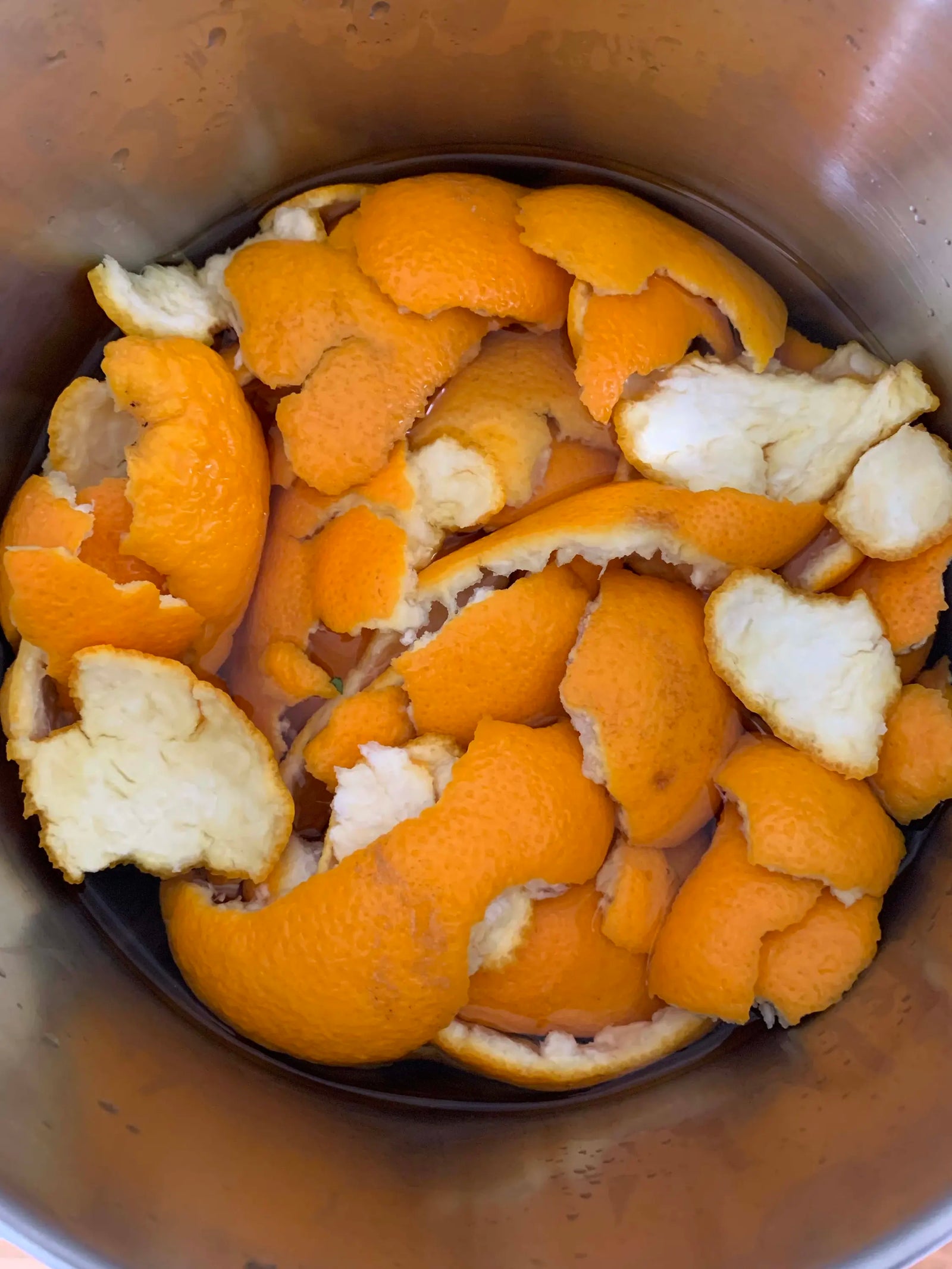
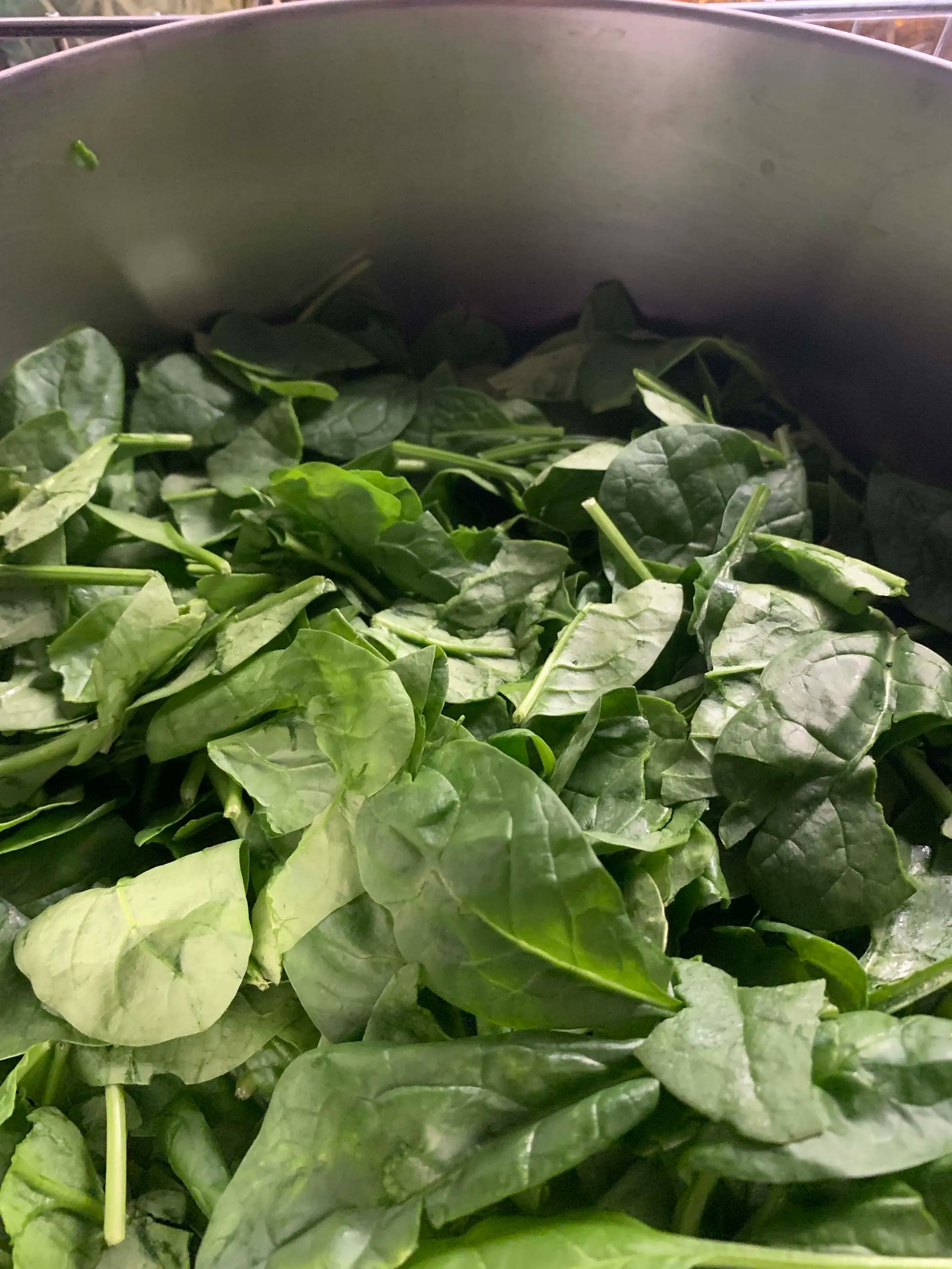
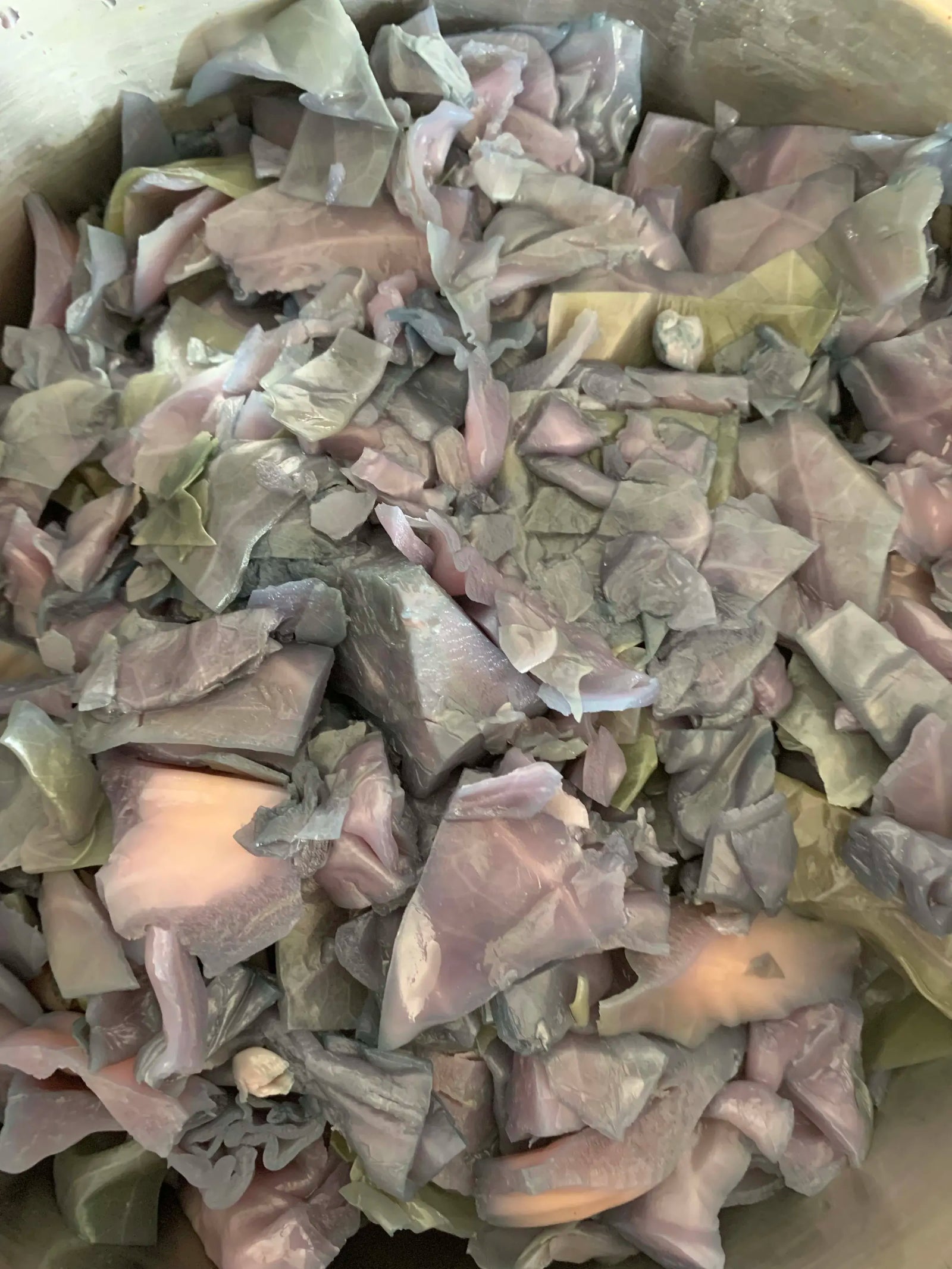
3. Make Magic Happen
3. Make Magic Happen
Prepare your fabrics for dyeing.
It’s important to prepare the clothes for dyeing when using natural dyes. For fruit based dyes, soak and simmer the clothes in a mixture of salt and water for one hour (1 part salt to 16 parts water). For vegetable based dyes, do the same but with vinegar and water instead of salt (1 part vinegar to 4 parts water). Once this step is done, wring out the fabric and hang it to dry. When it’s still partially damp, you’re ready to start tie-dyeing!
- Use your rubber bands to tie up the fabric. Try some of the methods here if you want to recreate our patterns. (insert examples and finished product side by side)
- Here’s where the artistry comes in! Pour the die onto the fabric in any way you want.
- Leave the clothes to soak in the pigments for 6-8 hours. After that, you can take off the rubber bands and marvel at the one-of-a-kind clothes you created.
- All that’s left to do is cold-wash the clothes and hang them to dry.
Keep in mind that natural dyes might change over time with exposure to wear and wash cycles. Who knows? You might like it better that way!
Prepare your fabrics for dyeing.
It’s important to prepare the clothes for dyeing when using natural dyes. For fruit based dyes, soak and simmer the clothes in a mixture of salt and water for one hour (1 part salt to 16 parts water). For vegetable based dyes, do the same but with vinegar and water instead of salt (1 part vinegar to 4 parts water). Once this step is done, wring out the fabric and hang it to dry. When it’s still partially damp, you’re ready to start tie-dyeing!
- Use your rubber bands to tie up the fabric. Try some of the methods here if you want to recreate our patterns. (insert examples and finished product side by side)
- Here’s where the artistry comes in! Pour the die onto the fabric in any way you want.
- Leave the clothes to soak in the pigments for 6-8 hours. After that, you can take off the rubber bands and marvel at the one-of-a-kind clothes you created.
- All that’s left to do is cold-wash the clothes and hang them to dry.
Keep in mind that natural dyes might change over time with exposure to wear and wash cycles. Who knows? You might like it better that way!
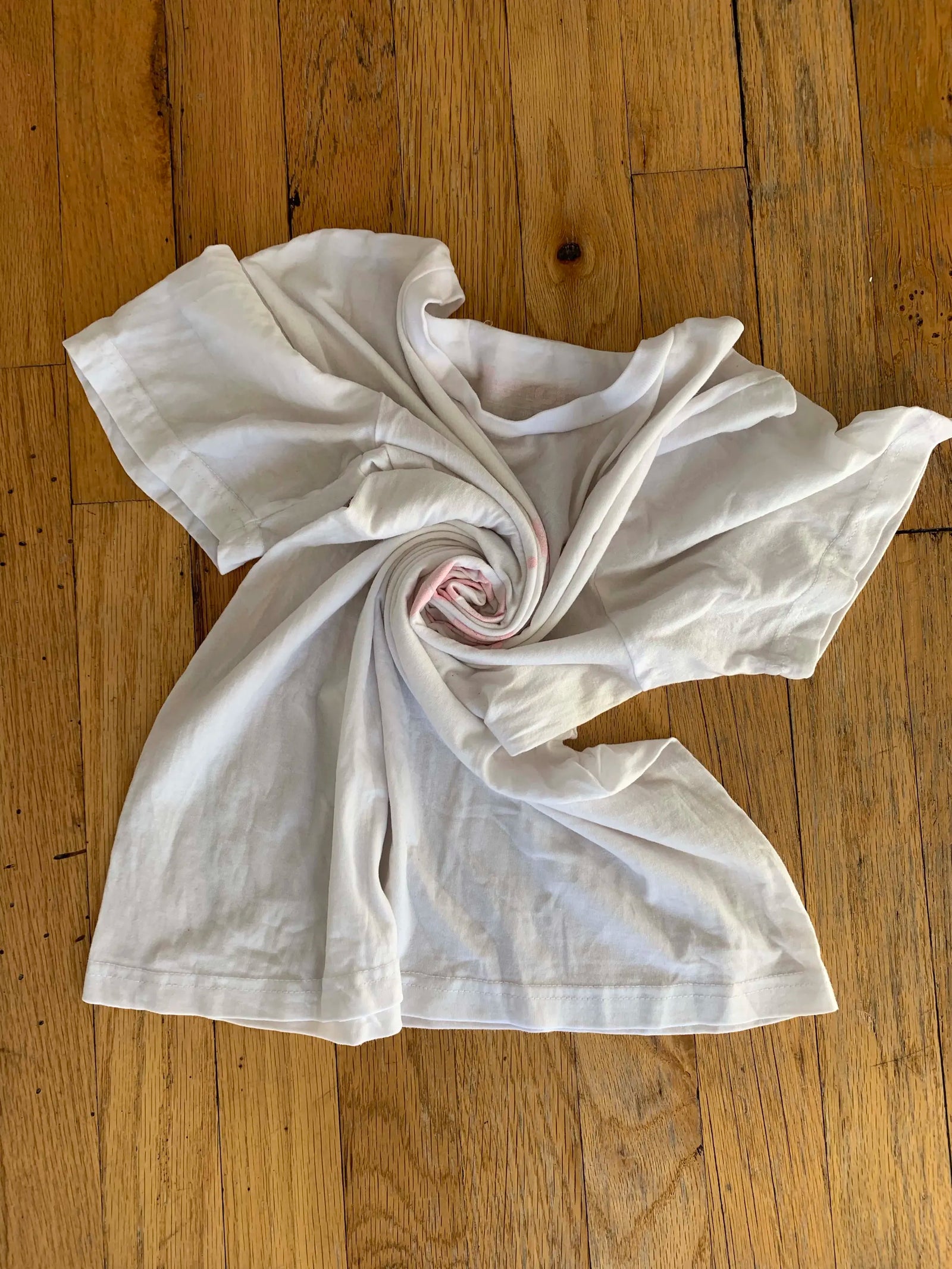
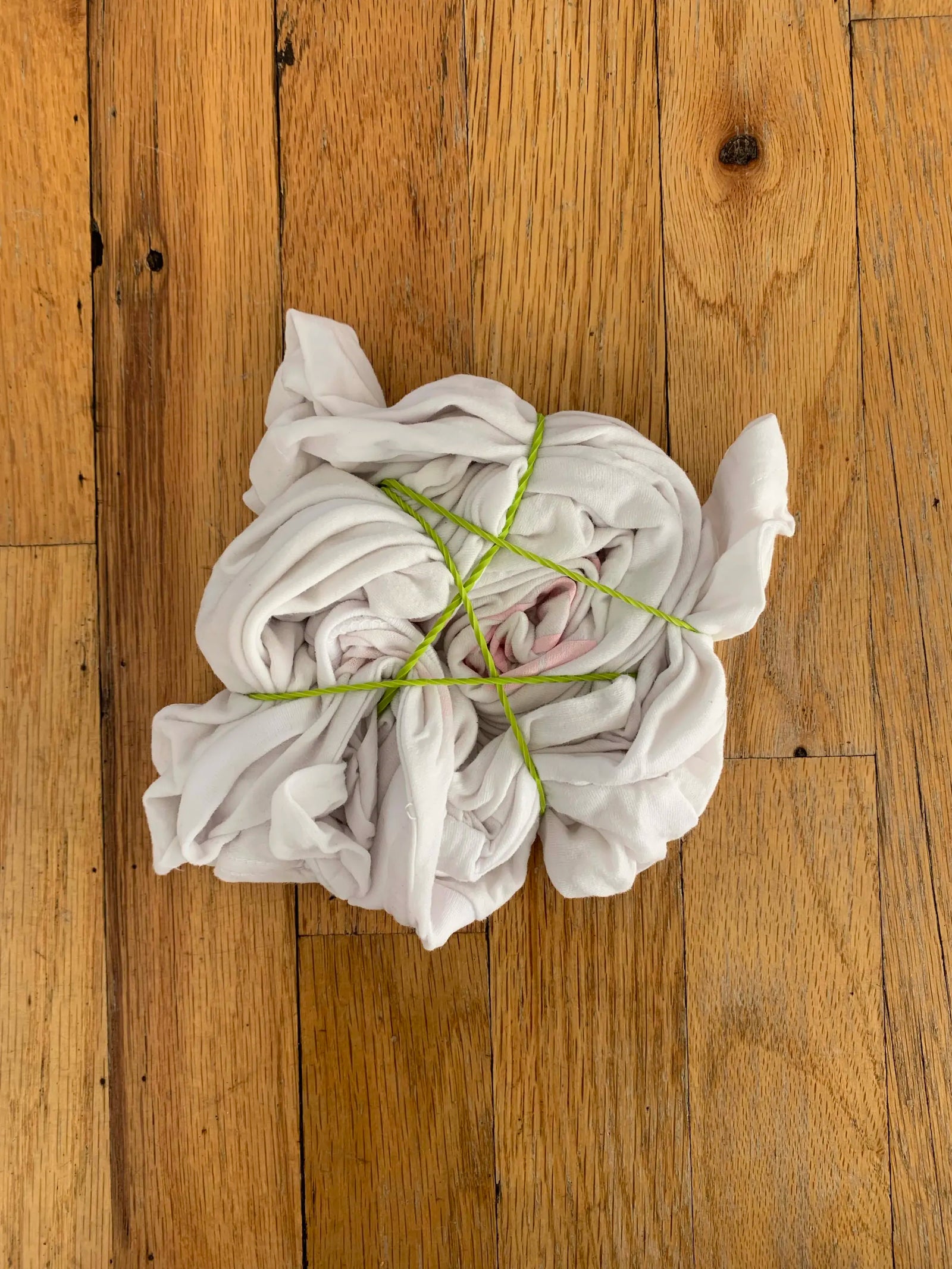
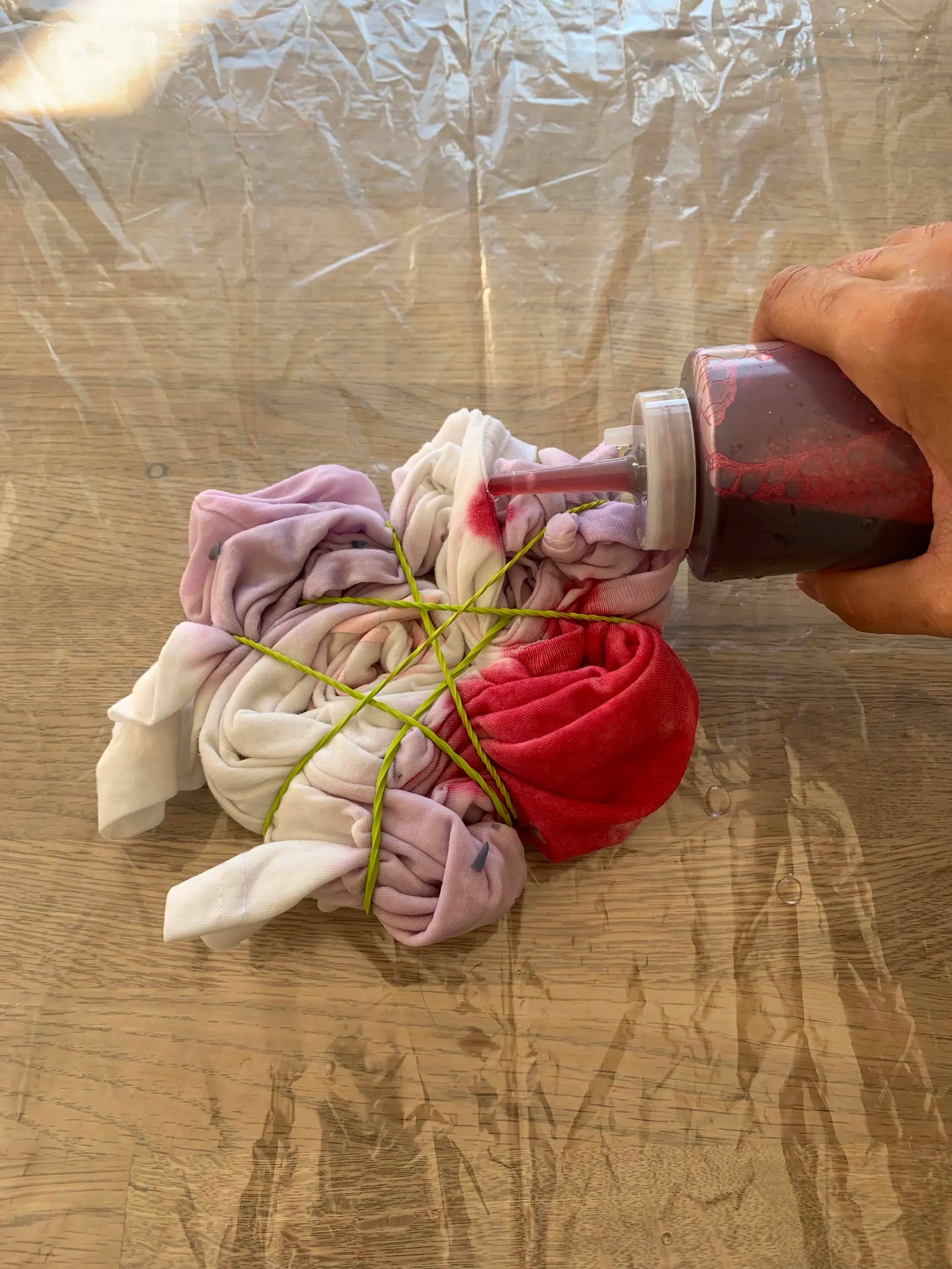
And Voila!
And Voila!
You’re all set, congratulations on your natural tie-dye. You can now rock your own responsibly dyed gear.
You’re all set, congratulations on your natural tie-dye. You can now rock your own responsibly dyed gear.


